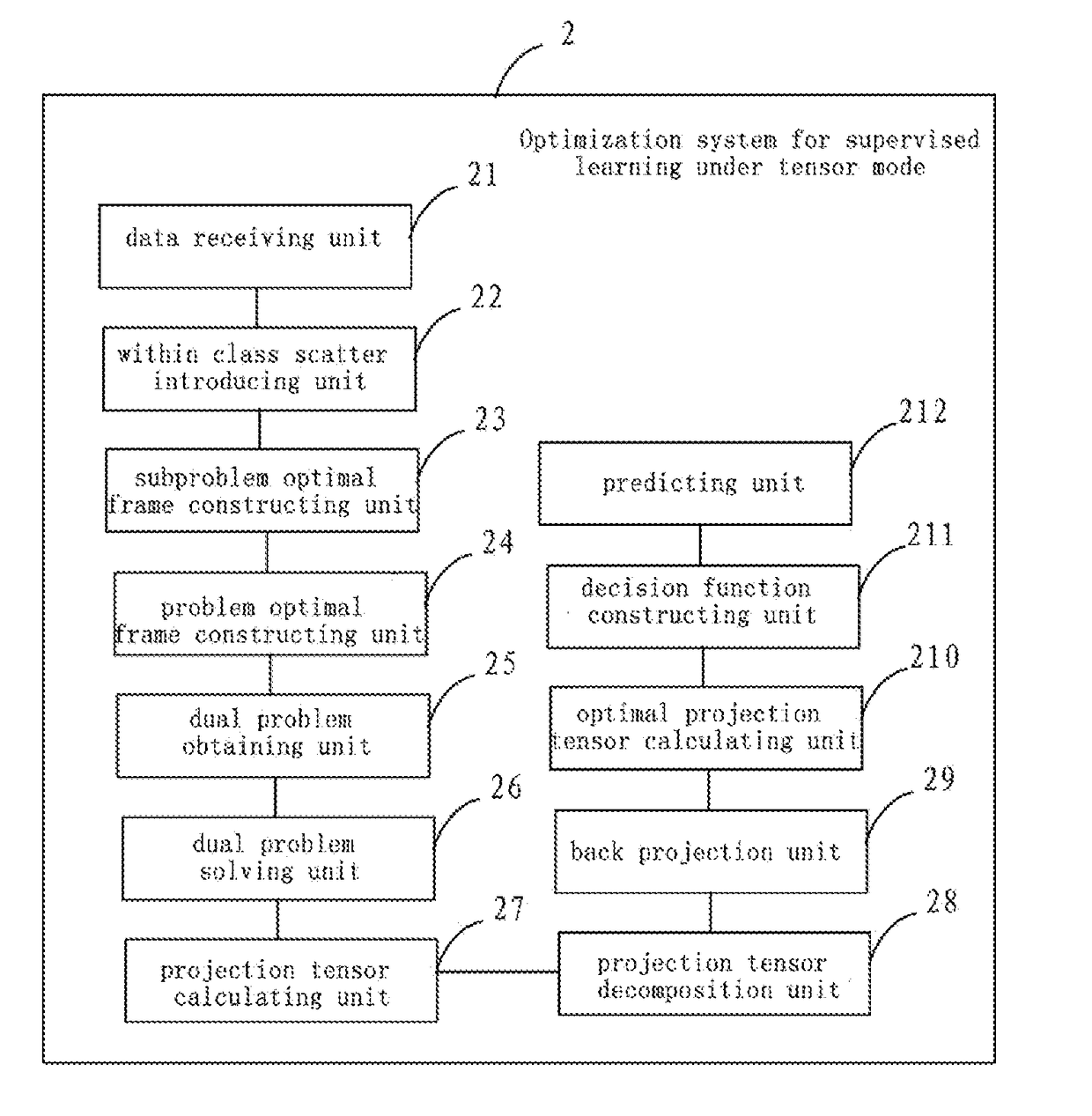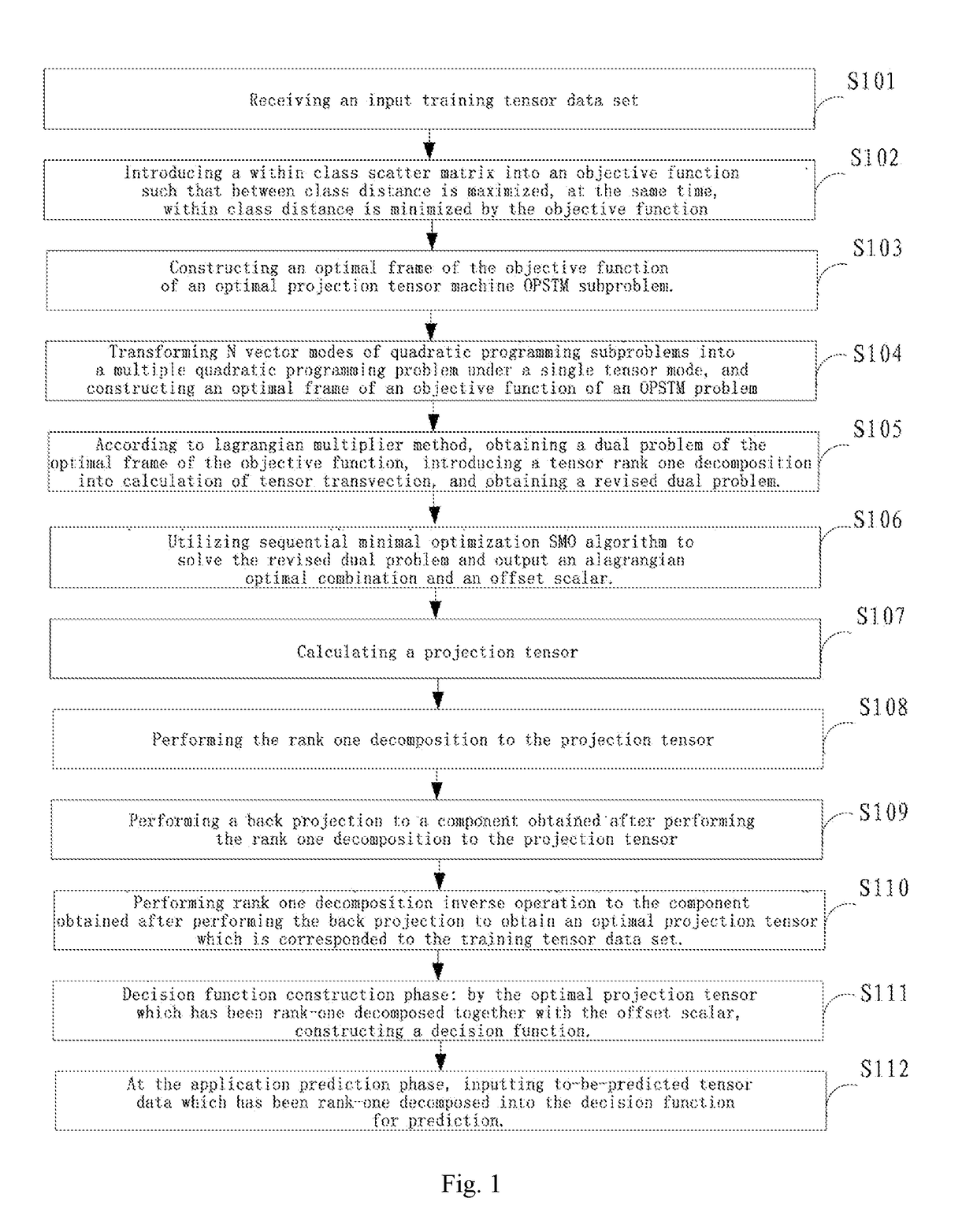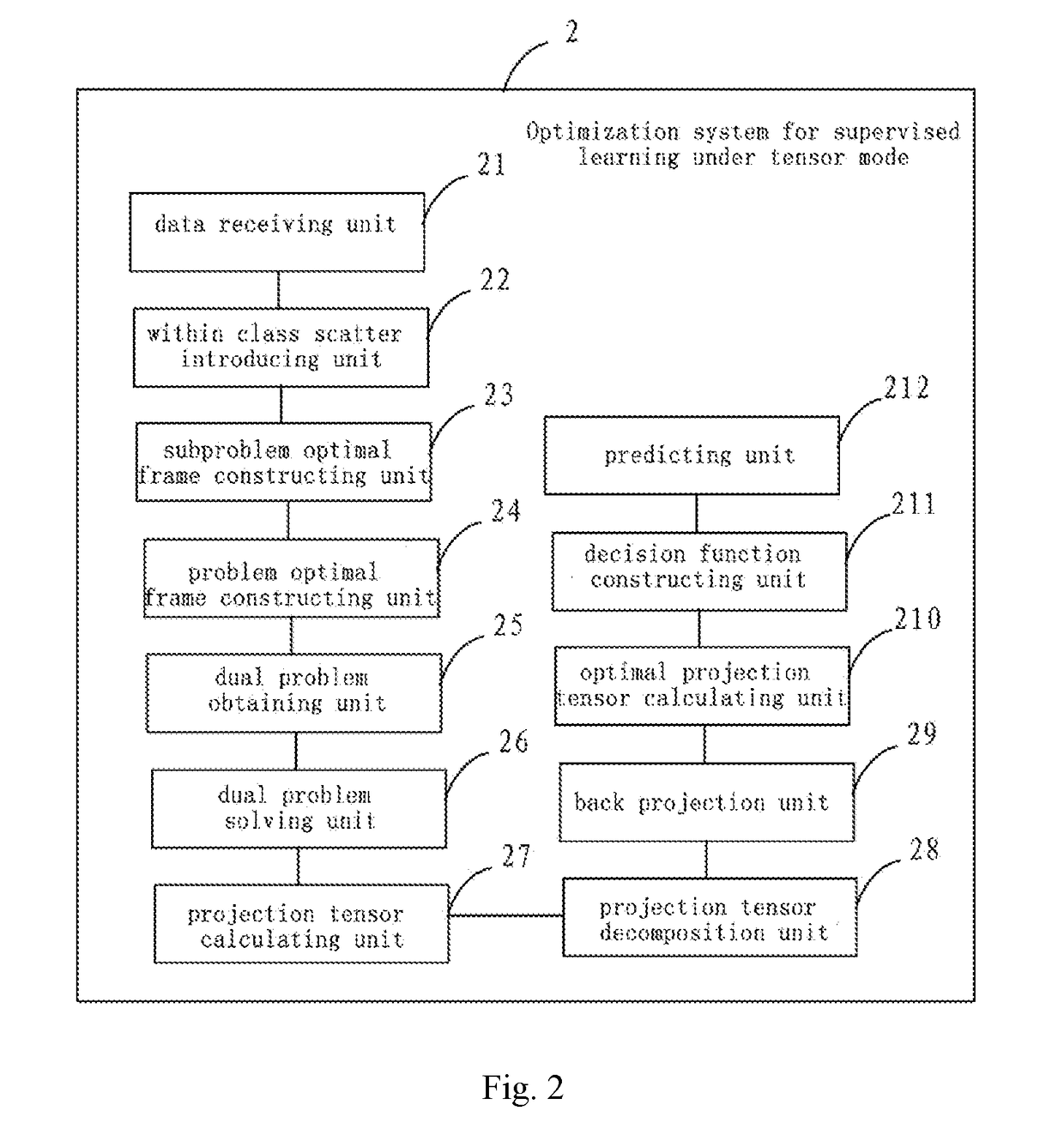Optimization method and system for supervised learning under tensor mode
- Summary
- Abstract
- Description
- Claims
- Application Information
AI Technical Summary
Benefits of technology
Problems solved by technology
Method used
Image
Examples
first embodiment
The First Embodiment
[0056]FIG. 1 shows an implementation process of the optimization method for supervised learning under tensor mode provided by the first embodiment of the present invention. The details are as follows:
[0057]Step 101, receiving an input training tensor data set.
[0058]In the embodiment of the invention, let the training tensor data set be {Xm, ym|m=1, 2 . . . M}, wherein Xm represents tensor input data, ymε{+1, −1} represents a label.
[0059]Take a gray level image for example, sample points are stored in a form of a second-order tensor (matrix), and all the sample points which are in a form of a column vector comprise an input data set. In a similar way, a label set is also a column vector; furthermore, the location of each label is corresponded to the location of the corresponding sample point.
X=[X1X2⋮XM]Y=[y1y2⋮yM]
[0060]Step 102, introducing a within class scatter matrix into an objective function such that between class distance is maximized, at the same time, wit...
second embodiment
The Second Embodiment
[0097]FIG. 2 shows a specific structural block diagram of an optimization system for supervised learning under tensor mode provided by the second embodiment of the invention. For illustration purposes, merely the part relevant to the embodiment of the invention is shown. The optimization system 2 for supervised learning under tensor mode includes: a data receiving unit 21, a within class scatter introducing unit 22, a subproblem optimal frame constructing unit 23, a problem optimal frame constructing unit 24, a dual problem obtaining unit 25, a dual problem solving unit 26, a projection tensor calculating unit 27, a projection tensor decomposition unit 28, a back projection unit 29, an optimal projection tensor calculating unit 210, a decision function constructing unit 211 and a predicting unit 212.
[0098]Wherein the data receiving unit 21 is configured to receive an input training tensor data set;
[0099]the within class scatter introducing unit 22 is configured ...
PUM
 Login to View More
Login to View More Abstract
Description
Claims
Application Information
 Login to View More
Login to View More - Generate Ideas
- Intellectual Property
- Life Sciences
- Materials
- Tech Scout
- Unparalleled Data Quality
- Higher Quality Content
- 60% Fewer Hallucinations
Browse by: Latest US Patents, China's latest patents, Technical Efficacy Thesaurus, Application Domain, Technology Topic, Popular Technical Reports.
© 2025 PatSnap. All rights reserved.Legal|Privacy policy|Modern Slavery Act Transparency Statement|Sitemap|About US| Contact US: help@patsnap.com



